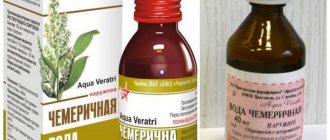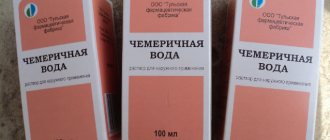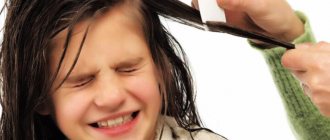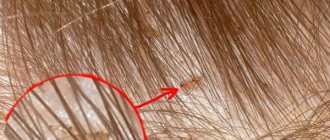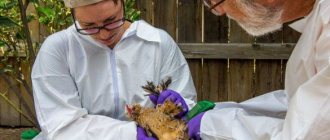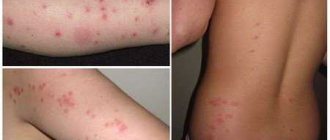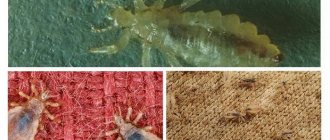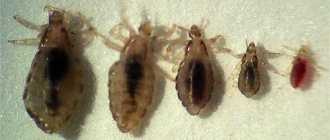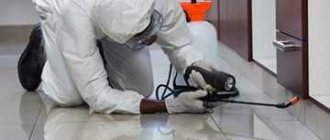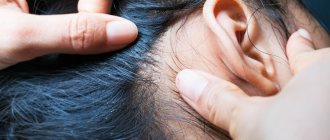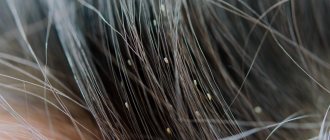Parasites are always unpleasant, and lice are no exception. Despite the widespread improvement of sanitary conditions, it is quite easy for modern people to catch lice. Especially if this person is a child and goes to kindergarten or school. Often, after the summer holidays, local outbreaks of lice occur in such institutions. And from there, lice easily get into houses, from where they are difficult to remove.
Let's consider such a classic means of combating this phenomenon as hellebore water for lice and nits.
What is hellebore water
In short, this is an alcohol-based infusion of the roots and rhizomes of Lobel's hellebore. This plant (also known as puppeteer) is a perennial herb ranging from 15 cm to 1.5 meters in height. The flowers have a pale green hue, but they are of little interest to us.
Hellebore root and rhizome contain high levels of alkaloids and other substances that make the plant extremely toxic. This is what allows hellebore infusion to effectively poison various small reptiles when used externally.
The specific composition and proportion of components in various hellebore-based preparations may be different. There are ointments, decoctions and tinctures that have long been folk remedies for a variety of situations. Note the presence of such properties as:
- Destruction of bacteria;
- Destruction of fungus;
- Weak analgesic effect.
However, there is not much information about clinical trials in this area.
There is much more evidence about the effectiveness of hellebore water in the treatment of head lice and getting rid of superficial skin parasites.
Contraindications
Due to the fact that hellebore belongs to the category of toxic plants, a drug based on it should be used with extreme caution. Hellebore water is contraindicated for use by those people who have an individual intolerance to its components.
IMPORTANT! Women during pregnancy and lactation should also not use this product. It is also not suitable for the treatment of head lice in children under three years of age, since in this case the risk of poisoning by dangerous alkaloids included in the drug is too high.
How does it work on lice and nits?
Does hellebore water kill lice? Yes, and now we will look at exactly how.
There are two active components: alcohol and alkaloids from the plant extract. When combined, they are guaranteed to kill lice. The mechanism is that its toxic alkaloids stop the digestive and reproductive systems of lice.
The principal advantage of hellebore remedy is that it negatively affects the reproductive system. As a result, insects cannot reproduce, which makes it possible to make the treatment effective, that is, to eliminate pests completely.
But that is not all. Lice usually hide on areas of the skin under the hairline, in most cases on the head. Treatment of this area with active preparations against pests can lead to damage to the hair along with the insects. Hellebore water, on the contrary, has a positive effect on the condition of hair. The components in the extract accelerate their growth, strengthen them and improve their appearance.
Thus, the use of such a composition allows:
- Deprive lice of the opportunity to reproduce;
- Destroy them;
- Strengthen and restore hair.
Please note that hellebore infusion can also get rid of laundry parasites. At the same time, the price of a 100 ml bottle in any pharmacy will literally be around a couple of tens of rubles. The composition can be sold in other quantities.
Description of the medicine
The alkaloids contained in this tincture affect the digestive system of parasites and lead to its dysfunction. After this, they cannot feed or reproduce.
The plant extract itself is used to treat many other diseases, such as arthritis, sciatica, gout and others.
When used on the head, in addition to the anti-inflammatory effect, it can promote hair growth and skin restoration. Cope with fungus that causes dandruff.
Note: the effectiveness of the medicine against nits has not been proven, keep this in mind if the child has been affected by lice for a long time, and they have already laid many eggs.
The product is inexpensive : one bottle costs 20-40 rubles in a pharmacy. Available without a prescription. But efficiency and accessibility have a downside.
Hellebore tincture is poisonous not only to insects, but also to humans. It should be used with great caution, especially when it comes to children. Because of this, it should not be used on babies and young children under 12 years of age.
Firstly, they are not yet aware of their actions and may accidentally get the substance into their eyes or swallow it. Secondly, the medicine must absolutely not enter the circulatory system - this can cause cardiac arrest. And the thin skin of babies is permeable for the absorption of poison into the bloodstream.
Allergy sufferers should be careful: hellebore, like many other natural herbs, can cause itching and redness.
Let's take a detailed and careful look at how to use hellebore water for lice for children.
Precautionary measures
First of all, the toxicity of the drug should be noted. It is poorly absorbed by the skin, so in the absence of intense rubbing, the risks are minimal. However, if it gets on the mucous membranes or if you try to taste it, intoxication (poisoning) of the body is possible.
In case of contact with mucous membranes, quick and abundant rinsing is necessary. If the hellebore drug is taken orally, call an ambulance immediately, as the consequences of poisoning can be very serious.
Due to the fact that the work is most often carried out with children, it is necessary to first explain to them that this is not a toy, and they cannot touch the liquid with their hands. If you are concerned about the question: can similar compositions be used for children, then the answer is yes, but if they are older than 2.5 years.
But those who are not recommended to use a hellebore-based product are pregnant women and women during lactation.
In addition, hellebore preparation should not be used on areas of the skin that have damage, since getting into the wound will lead to its absorption by the body and poisoning.
Contraindications and side effects of the drug
In pharmacies, hellebore water is sold without a prescription, and people use it, as a rule, ignoring consultation with a doctor. However, this remedy is not at all harmless.
Often after using the tincture you can see allergic reactions. Therefore, before using the drug in the treatment of head lice, you should undergo a sensitivity test. For this purpose, a small drop of tincture should be placed on the skin of the elbow from the inside. If redness, burning or itching does not appear within half an hour, you can proceed to applying the product.
Sometimes signs of overdose appear:
- weakness;
- dizziness;
- tachycardia;
- vomit;
- burning.
If such symptoms occur, you should immediately wash off the drug and seek medical help. There is no need to wait until the ailment goes away on its own, since failure to comply with the dosage can even lead to death.
Hellebore water poisoning is treated with anticholinergics, cardiovascular medications, and medications that normalize the functioning of the gastrointestinal tract. When taking the drug orally, it is necessary to lavage the stomach with a solution of tannin, a suspension of activated carbon, and white clay. Then the use of carminatives that prevent gas formation is prescribed. If the mucous membranes are damaged, use a 2% solution of procaine.
Treatment of lice with hellebore water is not recommended for patients with wounds on the head. It is also contraindicated:
- children under 12 years of age;
- patients with acute infectious diseases on the scalp;
- women during pregnancy and breastfeeding.
Method of using hellebore water for lice and nits
Instructions for treating the problem area at home are as follows:
- First, you need to thoroughly wash your hair using shampoo or another product.
- The person performing the procedure must wear gloves. For additional safety, it would be a good idea to protect your respiratory system (with a respirator or mask). For allergy sufferers, this is not a recommendation, but a rule.
- If the treatment is carried out on a child, he should be protected with safety glasses, as asking him to close his eyes may not work.
- The container with the drug must be shaken thoroughly to ensure uniform mixing of all components.
- Hellebore water from the container is poured onto a tampon or sponge until well soaked.
- Using a sponge, apply the tincture to the skin with light movements, without excessive rubbing. Application of the composition requires care. Please note that it is necessary to treat the hair, at least at a distance of a couple of centimeters from the surface of the skin. The most problematic place is the back of the head and temporal areas (here lice often multiply). Therefore, be especially careful in these places.
- After complete treatment, the surface must be covered to prevent evaporation of the drug. For this, a warm scarf or a special bandage is used if manipulations are performed in a difficult area.
- How long do you keep the composition on your head? About 30 minutes. This is an extremely important issue, since hellebore water is toxic, and its excessive exposure can cause harm to humans, but insufficient treatment time will reduce the efficiency of removal. For children, the time can be reduced to 15-20 minutes.
- Removal of dead individuals. The least pleasant stage of the procedure. The best option is to place the treated area under running water, apply shampoo to it, and comb with a fine-toothed comb.
- During the process, you may notice that some parasites remain alive. In this case, repeat the procedure the next day.
- Simply washing lice down the drain is not recommended. They can settle in the pipes and come back. Next you need to pour boiling water or chlorine solution.
- If no surviving individuals were observed, the procedure must be repeated after a week or 10 days to prevent relapse. Hellebore water kills only adult individuals, so their nit offspring could survive. Repeated treatment will eliminate this problem and completely cure head lice. Especially recommended for lovers of long hairstyles.
When treating pubic lice, the essence of the procedure remains the same, adjusted for the specifics of the location.
If you are going to remove linen lice, then the infested item of clothing or bedding can simply be soaked in the mixture, followed by a thorough rinse.
Efficiency
Although hellebore tincture is very effective in the fight against lice, it does not cope so well with their eggs - nits. This is the main disadvantage of the medicine in question. Read about products suitable for killing nits on children’s hair here.
It can also be noted that they cannot treat the head completely, like with a shampoo or a mask, but this cannot be done because of the need for painstaking manual application of the product, so some of the areas affected by parasites may not be treated and the insects will survive there.
It takes a relatively long time to apply hellebore water against lice to a child, which requires patience and perseverance from him .
Coupled with increased toxicity and danger of use, this makes hellebore tincture far from the best choice on the anti-lice medicine market.
There are many shampoos and sprays that are based on insecticides that are absolutely safe for humans, but also effectively kill insects. But there is one catch - the price.
Good professional anti-lice products are expensive, but hellebore can be bought for mere pennies. Because of its price, it can be considered a competitive product. But if you are willing to pay more for a reliable and safe solution, then, of course, there is no point in stopping your eyes on hellebore water.
If your child's head is not only a home for lice, but also an incubator for their eggs, then one herbal tincture will not be enough . It will be necessary to supplement the course of treatment with something that can eliminate nits.
One of the options has already been shown above - these are special combs. They comb out both lice and nits equally well. You can also use medicated shampoos, but be careful: too much chemical exposure can negatively affect your child's health.
Therefore, choose light, preventative preparations, such as those made from essential oils.
It can also be supplemented with soap effectively both on its own and as a prevention of possible skin irritations due to the use of hellebore.
You can make various decoctions, for example, from mint or nettle.
Note: you should not combine other alcohol tinctures with hellebore water. Excessive exposure to alcohol on the skin can be harmful to it.
Read our other articles on the topic of head lice in children:
- reasons for lice in children: where they come from and why they appear on a child’s head;
- signs and symptoms of head lice in children;
- how and how to remove lice and nits from a child with long hair;
- necessary prevention of head lice in children and recommended remedies for lice.
Risks
As we have already said, hellebore water should not be allowed to get into wounds, mucous membranes, and especially into the esophagus. However, be aware that too intense application and rubbing can also lead to the absorption of toxin components of hellebore. It should be used carefully.
Signs of poisoning are:
- Nausea;
- The appearance of a feeling of weakness;
- Decreased blood pressure, slowed heart rate;
- Severe itching.
You can only cope with the last symptom on your own by washing the affected area. In other cases, it is better to call an ambulance. By the way, be prepared to be reprimanded for trying to get rid of lice using folk methods on your own.
Side effects
In rare cases, hellebore water can provoke the development of local allergic reactions , which manifest themselves as:
- itching;
- burning;
- tingling;
- tingling;
- erythema (redness of the skin) at the site of application of the drug.
In case of accidental ingestion of the drug, symptoms of poisoning may occur:
- nausea;
- diarrhea;
- dry mouth;
- thirst;
- severe headaches;
- pain in the epigastric region.
In particularly severe situations, disturbances in the rhythm and frequency of contractions of the heart muscle , which are often accompanied by a slowing of the pulse . Sometimes the nervous system , as evidenced by:
- convulsions;
- increased arousal;
- visual disturbances;
- loss of consciousness.
Often the only signs of intoxication with hellebore alkaloids are dyspeptic disorders and a sharp slowing of the pulse with a drop in blood pressure (which is caused by stimulation of the vagus nerve ).
